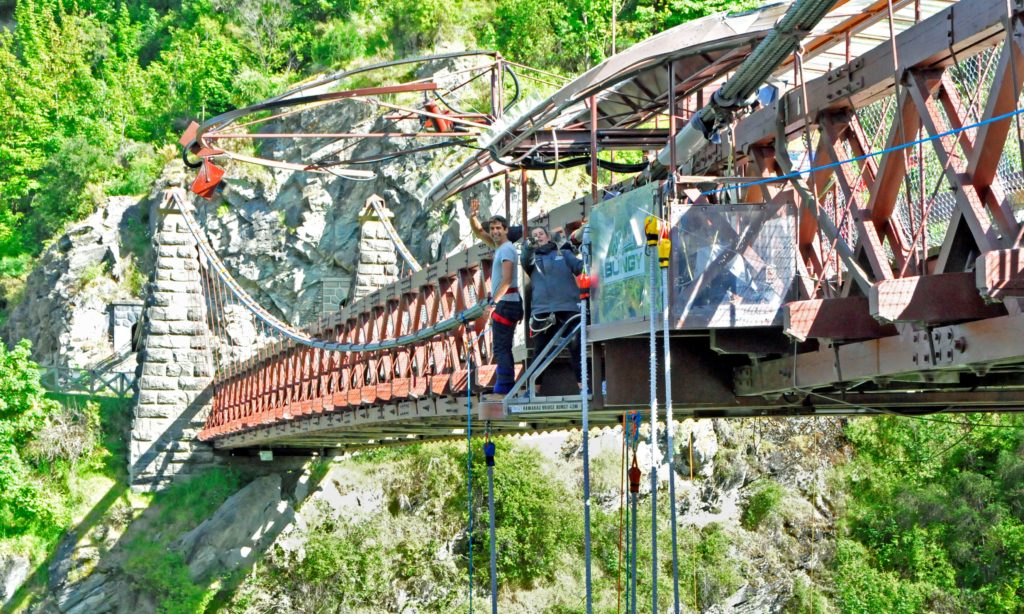
Bungee jumping has become popular all over the world, but it started when a New Zealander emulated a dangerous South Sea rite of passage.
For untold generations, young men on Pentecost Island have jumped from tall wooden towers with one end of a vine tied to their ankles and the other end to the tower. The vines are sized so that the jumper’s fall is instantly stopped just as he hits the ground. Those surviving the ordeal are welcomed into the society as “men.” In the mid-1980s, A.J. Hackett decided to duplicate this so-called “land diving” experience with a less abrupt finale. He created a super elastic cord (called “bungy” in New Zealand) and began jumping off New Zealand bridges. Finding the experience exhilarating and seeing its commercial potential, he jumped off the Eiffel Tower in 1987, landing him in jail and creating international interest. In 1988, he opened the world’s first commercial bungy jumping site on the Kawarau Gorge Suspension Bridge, 141 feet above the Kawarau River near Queenstown, New Zealand. The idea took off and adventure seekers from around the world began coming to New Zealand to literally jump off a bridge.
Today, many bungee jumping sites around the world are taller than the Kawarau Gorge site, but thousands of people each year come to where it all began. Paying about $150 per jump, jumpers choose whether to have the cord sized to allow them to touch the water or to stop just above the water. Most begin the four second or so free fall with their arms extended as if in flight, with first-time jumpers often screaming as they approach the river head first at 50 miles an hour. Once the jump is over, the jumper is pulled from the air and hauled ashore on a small rubber boat.